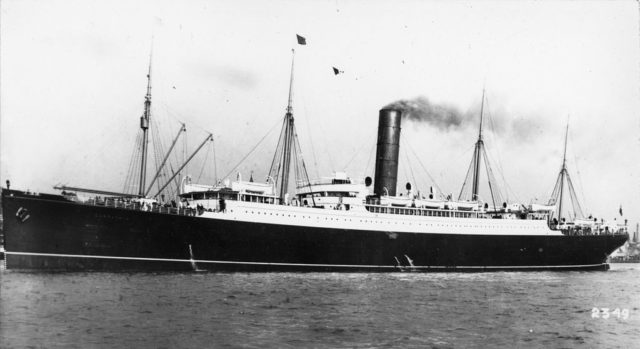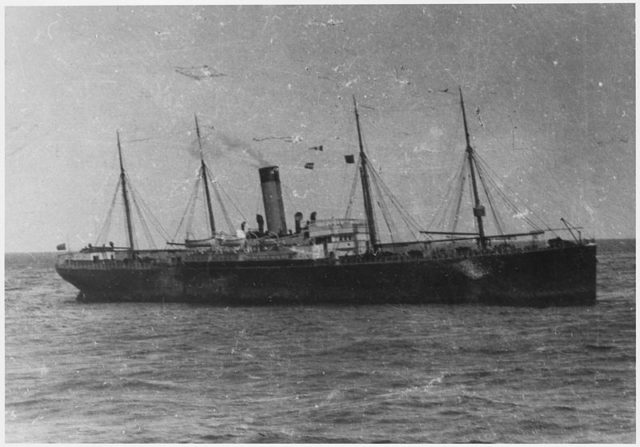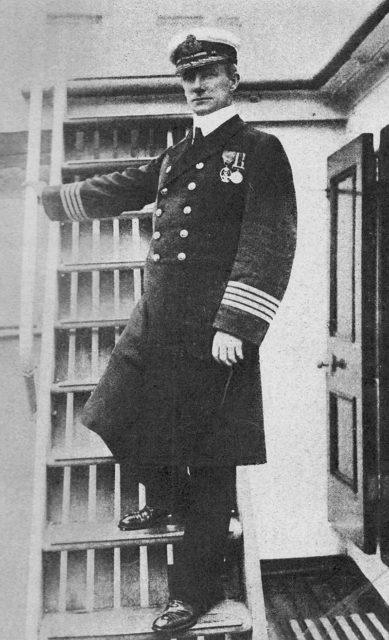It is said that Jack Phillips and Harold Bride, the senior and junior wireless officers on board the RMS Titanic, did not leave the Marconi Room of the ocean liner on the night of the sinking. They remained, sending distress signals to other ships until the very end. Sadly, their lives were among the hundreds of others claimed by the cold ocean waters.
While we know that the RMS Carpathia, situated approximately 50 miles to the southeast of the sinking Titanic, came to its aid, we also know of another vessel that did not heed the call. Or perhaps something went wrong in the exchange of messages. Doubts still remain.
This other ship was a British steamship, the SS Californian, a vessel that completed its maiden journey a decade earlier in 1902. The SS Californian, however, will be forever remembered and judged by history after it failed to promptly respond to the Titanic‘s distress signals, despite being only 20 miles away.

During that period, the SS Californian was under the command of Captain Stanley Lord. He took command a year earlier, and he found himself and his crew in the North Atlantic after leaving London on April 5, 1912, embarking on a journey to Boston. Records suggest that Stanley Lord’s ship happened to be close to empty, not having any passengers on board.
On the evening of April 14, 1912, the crew of SS Californian noted a number of large icebergs and, following the captain’s orders, halted for the night at around 10:20 PM. The captain preferred to remain in that spot for the night and then resume the route in the early morning.

Before retreating to his cabin, Stanley Lord gave orders to Cyril Evans, his single wireless operator on board, to send messages of warning concerning the ice to any ship that might be in the area. Which is what Evans did.
As the story goes, the SS Californian might not be totally in the wrong. Once Evans’ message had reached the crewmen of Titanic, the warning was allegedly dismissed by an angry and tired Jack Phillips, who had tapped out: “Shut up! Shut up! I am busy. I am working Cape Race.”

Reportedly, both the Titanic wireless officers had indeed been fully occupied the entire day, as some of the equipment in the Marconi Room needed urgent maintenance. As the day came to a close, the pair was overwhelmed by further administration messages that piled up. As they were quite exhausted, did they dismiss the seriousness of the warning from SS Californian?
As the weather became colder and colder each quarter after midnight, with no wind nor moon on the horizon, many crewmen of the SS Californian saw some white rockets fired up into the skies. They exploded over the silhouette of a vessel off in the darkness. Eight flares went up in total.

The crew members informed Captain Lord, already asleep in his cabin. He was woken at least two times throughout the night but dismissed anyone breaking into his dreams, muttering that such rockets were probably “company rockets” that ships employed by the same company used to recognize each other.
Back on the RMS Titanic, the clock was ticking fast and seemingly there was no other vessel in their vicinity. Accounts tell that some of the crew noticed lights from a vessel somewhere in their range. The log of SS Californian shows that Morse code lamp messages were sent but no response followed; however, the captain gave no order to contact by wireless.

Lord did not wake up until around 5:00 AM. But as you might guess, it was too late. The “unsinkable” ship had already cracked into two pieces and gone to its ultimate journey to the ocean bed three hours earlier. The Californian arrived on the spot of the tragedy at around 5:45 AM, joining the quest of searching for bodies that still floated in the waters. RMS Carpathia in the meantime had slowly set course for New York.
This incident involving the SS Californian certainly was one of the greatest controversies that followed to determine what happened with the Titanic. And there wasn’t an investigator that would not put a certain amount of blame on Lord for his failings that night. No conviction followed for Lord, but his employer, Leyland Line, sacked him a few months after the maritime tragedy.

In contrast, the Carpathia‘s captain, Arthur Rostron, was praised both in England and the United States. After picking up the SOS signals, he commanded his crew to rapidly move toward the RMS Titanic, pushing the vessel’s limits. With his efforts, they were able to save the lives of more than 700 people.
There has been considerable debate over whether Stanley Lord was indeed negligent concerning the Titanic. As many accounts conclude, if his actions had been different, if he only decided to inspect the cause of the flares just 20 miles away from his vessel, the captain could have likely overseen the rescue of hundreds more people.
